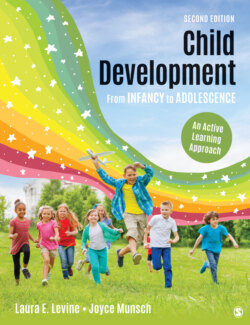Читать книгу Child Development From Infancy to Adolescence - Laura E. Levine - Страница 100
На сайте Литреса книга снята с продажи.
Sigmund Freud’s Psychosexual Stages
ОглавлениеFreud thought our most basic drive is the sex drive. If you believe that the biological goal of our lives is to pass on our genes, then you might agree with Freud that the sex drive is central to everything else. Along with this, Freud believed that many of our thoughts and feelings about sexuality are hidden in our unconscious mind, the part of our mind of which we are unaware. He outlined five stages in child and adolescent development, which he called psychosexual stages. At each of these stages, sexual energy is invested in a different part of the body, and gratification of the urges associated with those areas of the body is particularly pleasurable. Freud believed that the way these urges are handled during each of these stages determines the nature of an adult’s personality and character.
Psychosexual stages: Freud’s idea that at each stage of development, sexual energy is invested in a different part of the body.
During the oral stage, which lasts from birth to about 18 months of age, infants derive a great deal of satisfaction from activities that stimulate their mouth, lips, or tongue. This is why infants often immediately put anything they get their hands on into their mouth. The anal stage lasts from 18 months to 3 years. At this age the pleasure center moves to the anus, and issues of toilet training become central. Children’s task at this age is to learn to control their bodily urges to conform to society’s expectations. The phallic stage lasts from 3 to 6 years of age. Sexual energy becomes focused on the genitals, and boys and girls develop what has been called “the family romance.” Boys imagine marrying their mother when they grow up and girls imagine marrying their father. Children must learn to give up these desires and begin to identify with the parent of the same sex.
Oral stage: Freud’s first stage, in which infants’ biological energy is centered on the mouth.
Anal stage: Freud’s second stage, in which toddlers’ sexual energy is focused on the anus.
Phallic stage: Freud’s third stage, in which children ages 3 to 6 overcome their attraction to the opposite-sex parent and begin to identify with the same-sex parent.
The latency stage occurs between 6 and 12 years of age. Latent means inactive, and Freud (1953) believed that during this time the sex drive goes underground. Children move from their fantasies of marrying their parent to a new realization that they must take the long road toward learning to become a grown-up. The sex drive provides energy for the learning that must take place, but the drive itself is not expressed overtly. Children transfer their interest from parents to peers (Freud, 1965). At this age children who had cross-sex friendships often relinquish them as each sex professes disgust for the other. This separation of the sexes begins to change at age 12, when young adolescents enter the genital stage. At this point, sexual energy becomes focused on the genital area, and a more mature sexual interest occurs between peers.
Latency stage: Freud’s fourth stage, involving children ages 6 to 12, when the sex drive goes underground.
Genital stage: Freud’s fifth and final stage in which people 12 and older develop adult sexuality.
Freud believed that emotional problems in adulthood derived from difficulties with resolving issues that arise in each of these stages. In his view, those problems could best be handled when earlier difficulties were made conscious through the process of “the talking cure,” called psychoanalysis.
